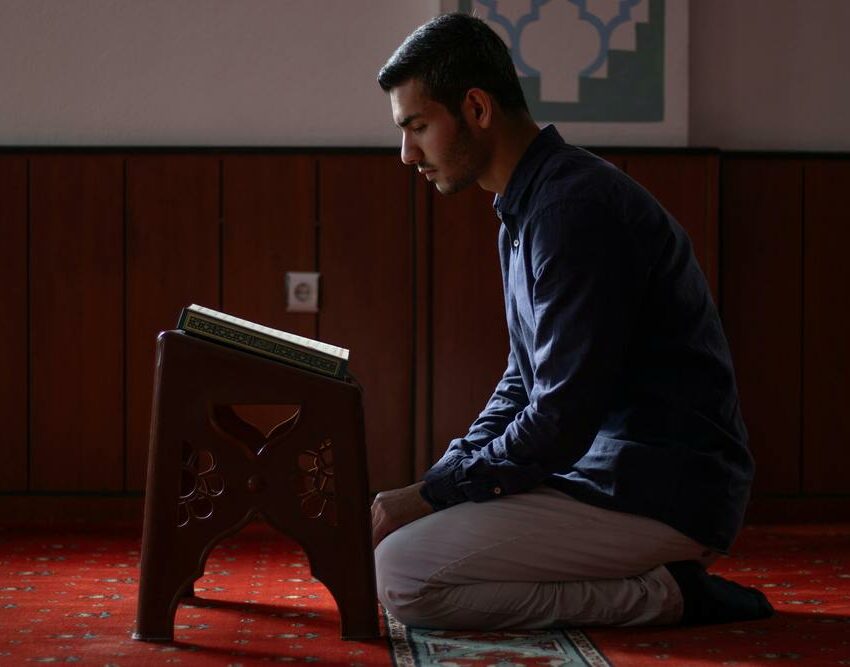
It’s almost that time of year again when water bottles and snacks disappear from desks, eateries become crowded close to sunset, and some breaths become slightly more odorous. The blessed month of Ramadan is arriving.
The thought of surviving from sunrise to sunset without food and drink (and yes, that includes water too) can seem unfathomable to those who are unfamiliar with the essence of this holy month.
The truth is that for 99.9% of Muslims, it’s our favourite time of the year and the month we most look forward to.
So for those who have always wondered about its significance or felt a little uncomfortable asking seemingly silly questions, Cape Town etc offers a little guide to understanding the basics of Ramadan.
When does it start and when does it end?
Muslims follow a Lunar Calendar consisting of 12 months in a year of either 354 or 355 days. This is why Ramadan begins 10 to 12 days earlier each Gregorian calendar year.
Ramadan marks the ninth and holiest month of the Islamic calendar. It lasts either 29 or 30 days, depending on when the new crescent moon is or should be visible (we won’t get into the politics) with the naked eye.
How do we know whether the moon has been sighted or not?
There is a dedicated group of people called The Crescent Observers Society (affectionately called maankykers by locals) that go out in search of the new crescent moon (hilaal in Arabic) on the 29th night of every Islamic month.
If the moon is sighted in any of the cities making up SA, the start of the new month (in this case, Ramadan) commences the next day for the whole country. If not, the current month (in this case, Sha’ban) will have a 30th day.
After much deliberation among the maankykers across the country, a decision is made and an announcement is broadcast on the Voice of the Cape (VOC), Radio 786 and any other local Islamic radio stations.
The same goes for Eid, which signifies the first day of the following month, Shawwal. This year, Eid will be celebrated on either 31 March or 1 April.
The maankykers go out to various lookout points around sunset. In the Cape, these include Oudekraal, Signal Hill, Soetwater, Stellenbosch and Three Anchor Bay.
Ramadan in a nutshell
In a nutshell, Ramadan is the period in which all Muslims abstain from food, drink, sexual activity and immoral behaviour from sunrise (approximately an hour and a half before, if we’re being technical) to just after sunset, when the athaan (call to prayer) is heard.
The pre-dawn meal is referred to as suhoor or souwe, according to the Cape Malays. The breaking of the fast in the evening is called iftaar or boeka (again, according to the Cape Malays).
Boeka often begins with dates and water, as the Prophet (Peace be Upon Him) did and ends with many savouries, traditional Cape Malay delights and a pretty bloated stomach.
After Eshai (the last of the five obligatory daily prayers), there is a special prayer that is performed in congregation at mosques every night of Ramadan called Taraweeh in which the entire Qur’an is recited in portions throughout the month by those who have memorised the Qur’an by heart (hafiz).
The last ten nights of Ramadan are extra sacred. Within the odd nights of these last ten nights lies Laylatul Qadr (the Night of Power). The Qur’an states that it was during this night that Angel Jibreel (Angel Gabriel) revealed the Holy Qur’an’s first verses to the Prophet Muhammad (Peace be Upon Him).
On this night, a single good deed and supplication can award you the blessings of a thousand months. Although the exact date is unidentified, it is commonly believed that it falls on the 27th night.
Who fasts and who doesn’t?
Fasting during the month of Ramadan forms part of the Five Pillars of Islam, which make up part of the foundation of our religion. It is compulsory for all healthy and post-pubescent Muslims to fast.
There are, however, some who are exempt from fasting, like those who are mentally or physically limited due to illness and old age, as well as prepubescent children. Pregnant, breastfeeding and menstruating women are also exempt from fasting. However, they need to make up the days they have missed before the start of the next Ramadan.
Why do Muslims fast?
Ramadan is a special month for Muslims across the globe. But in Cape Town, the atmosphere is unmatched.
There’s this warming sense of unity within the community. Families, friends and strangers come together for boeka and prayer; charity and generosity become a focal part of our daily routines, and we’re all striving to become the best versions of ourselves each day.
Ramadan is so much more than simply abstaining from food and drink; it’s a time for self-reflection, healing and gaining closeness to Allah. It’s like a much-needed reset mentally, emotionally and spiritually.
Muslims try their best throughout the month to pray more, recite the Qur’an more and refrain from listening to music, watching TV, swearing, lying and gossiping.
So you might find your Muslim friend, peer or colleague suddenly wearing a scarf, dressing slightly more modestly or trying not to swear as much. Now that you know why – offer them a kind word or two of encouragement.
Why are there two Eids?
Eid al-Fitr, the ‘festival of the breaking of the fast’, celebrates the end of the blessed month. It begins with a special congregational prayer that takes place outdoors. The day continues with getting dressed up, visiting friends and relatives, gift exchanges and family feasts, and once again ends with pretty bloated stomachs.
Eid al-Adha (sometimes referred to as ‘second Eid’ by locals) is celebrated later in the year during the month of Dhul-Hijjah. This is the month when Muslims from around the globe make the pilgrimage (Hajj) to Mecca to fulfil another of the Five Pillars of Islam.
It is this Eid celebration in which Muslims slaughter sheep in commemoration of Allah’s mercy in sparing the Prophet Ibrahim (Abraham) from sacrificing his son.
First published by Cape Town etc
Compiled by Tauhira Ajam
Also see: Turn any corner into the ultimate cosy reading nook




